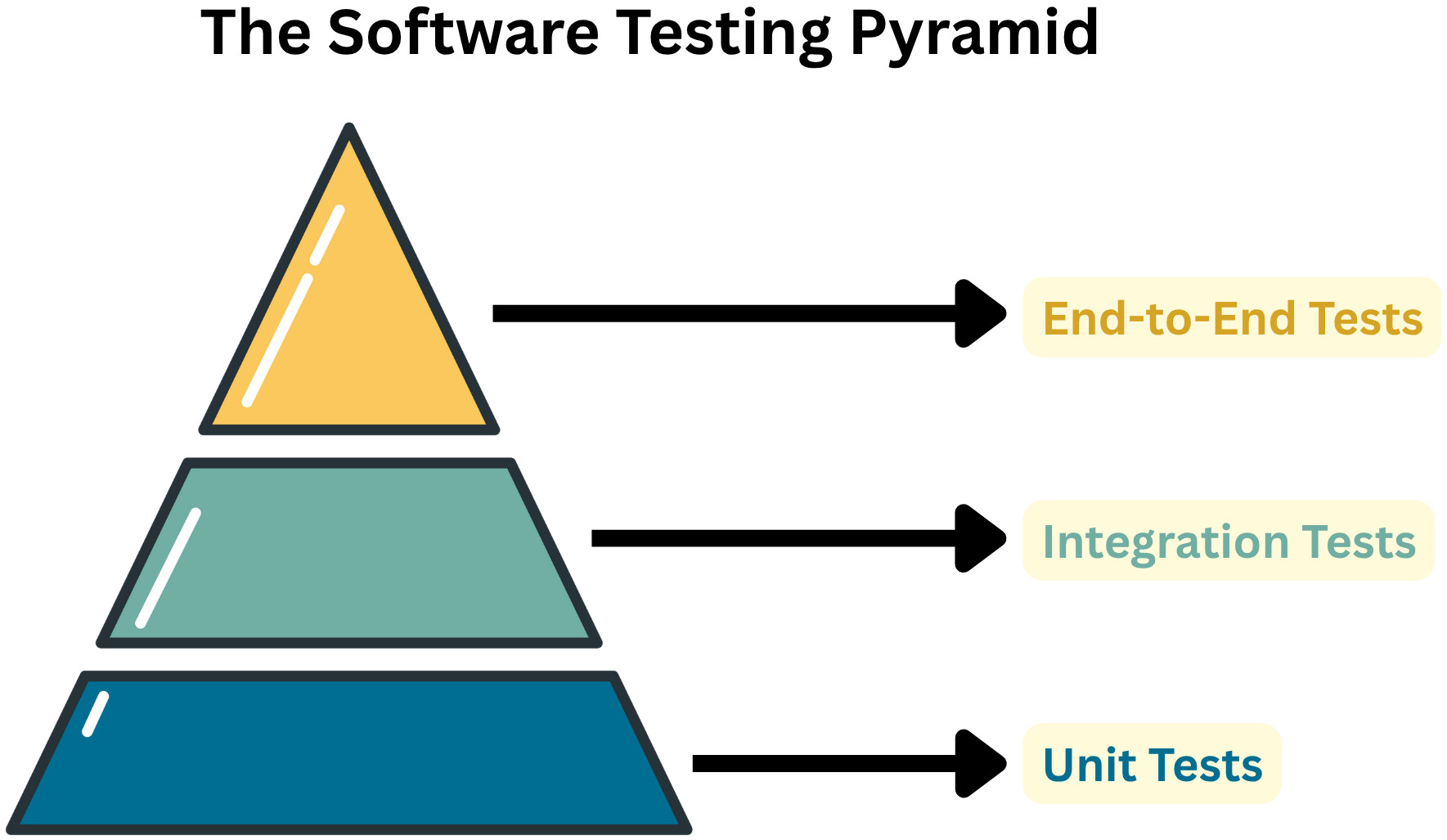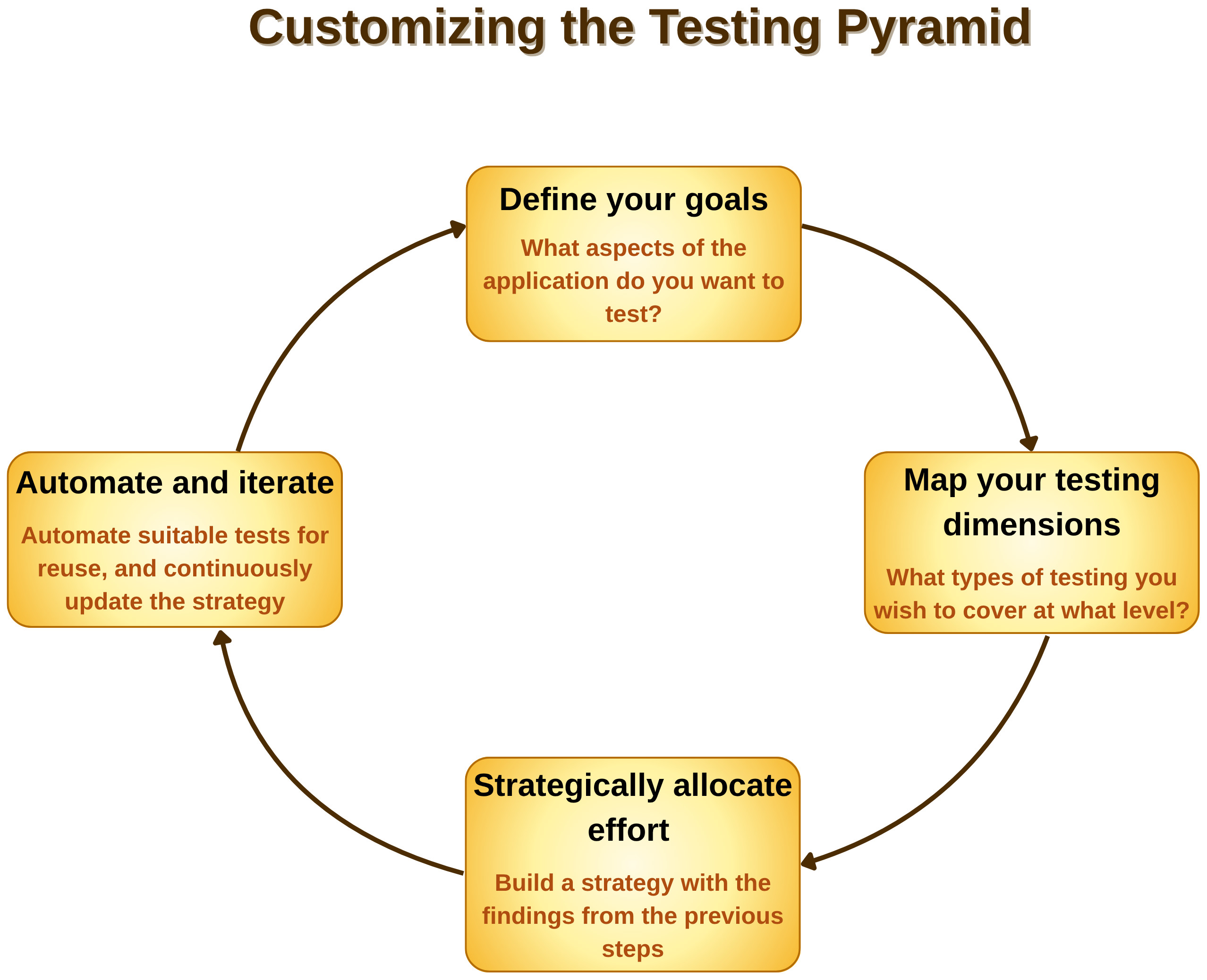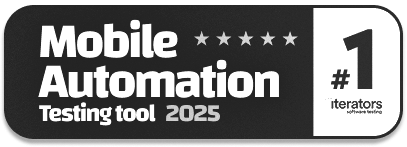How to Customize the Testing Pyramid: The Complete Guide
|
|
The Software Testing Pyramid is something everyone involved in QA is familiar with. More than being a concept, it’s been a blueprint that has guided testing and automated testing across companies. While it has helped many to achieve high quality over the years, criticism of it has been increasing. In today’s complex software world, a one-size-fits-all pyramid can become a bottleneck, leading to slow, flaky, and expensive tests. This article will show you how to break free from the “cage” and build a flexible, context-driven testing strategy that aligns with your specific project needs.
| Key Takeaways: |
|---|
|
What is the Testing Pyramid?
Let’s recap what the testing pyramid is before we carry on.
At its heart, the testing pyramid acts as a framework for guiding testers on how to structure their testing efforts for maximum efficiency. It’s built on three core layers, each with a distinct purpose.

Layers of the Testing Pyramid
- The Broad Base – Unit Tests: This is where you should put most of your testing effort. Unit tests are all about checking the smallest, most fundamental parts of your code in isolation, a single function, a class, or a module. They’re incredibly fast, cheap to run, and easy to maintain. When a unit test fails, you know exactly where the problem is.
- The Middle Layer – Integration Tests: Moving up, integration tests verify that different parts of your application work together as expected. This could mean ensuring your code communicates correctly with a database, a third-party API, or another internal service. They’re slower and more expensive than unit tests, but they’re essential for catching bugs that a single unit test would miss.
- The Narrow Top – End-to-End (E2E) Tests: These are the tests that sit at the very top of the pyramid. They simulate a real user’s journey through your application, from clicking a button to completing a transaction. While they provide the most confidence that your entire system is working, they are also the slowest, most expensive, and most fragile tests to maintain. For this reason, you want to have a small, focused number of them.
Purpose of the Testing Pyramid
The key takeaway is that the pyramid’s shape isn’t just an arbitrary design; it represents the ideal balance. By having a large number of fast, cheap tests at the bottom and a small number of slow, expensive tests at the top, you get a solid foundation of quality without sacrificing development speed.
Read more about the testing pyramid over here: Test Automation Pyramid Done Right.
Why the Traditional Test Pyramid is No Longer Enough
Let’s look at the main reasons why the testing pyramid falls short.
It Ignores Modern Architecture
Applications today are diverse and involve various components like microservices, serverless architecture, and distributed systems. Your strategy to test such applications will vary and depend on many factors (which we’ll see below). For example, the standard prescription of minimum E2E tests may not work for a UI-heavy application where user journeys are the crux.
Focuses Too Much on Functional Testing
The pyramid talks about unit, integration, and E2E tests, which are all about “does it work?” But what about other critical aspects of quality? The traditional model doesn’t tell you where to fit in performance testing, security testing, accessibility testing, or usability testing. These are non-negotiable for modern software.
It Can Give a False Sense of Security
Following the “rules” of the pyramid without adapting to your specific context can give you a lot of tests, but not necessarily the right ones. If you’re building a complex distributed system, a lot of unit tests won’t help if your services can’t talk to each other properly in a production environment.
Evolving Beyond the Pyramid
While the Test Pyramid is a classic for a reason, it’s not the only way to visualize a good testing strategy. As modern software has become more complex, new models have emerged to help teams think about quality in different ways.
The Testing Trophy
Made popular by Kent C. Dodds, this model is a slight refinement of the pyramid. It keeps the broad base of unit tests, but then adds a large number of integration tests, a small number of end-to-end tests, and a top-level of static analysis and manual testing. The idea is to emphasize the value of integration tests, which often give you a better balance of confidence and speed than simply relying on unit tests alone.
The Testing Quadrant
This model categorizes tests by their purpose rather than their position in the software stack. It divides testing into four quadrants:
- Quadrant 1 (Internal Quality): Focuses on unit and component tests that are technology-facing and support the programmers.
- Quadrant 2 (Business-Facing): Focuses on functional tests like examples, stories, and prototypes that support the team and the business.
- Quadrant 3 (System-Level Quality): Focuses on user acceptance and exploratory testing that is business-facing and critiques the product.
- Quadrant 4 (Performance and Non-Functional): Focuses on security, performance, and load testing that is technology-facing and critiques the system.
The Swiss Cheese Model
This model isn’t about test types but about layers of protection. It suggests that a single layer of testing will always have holes (or vulnerabilities). By stacking multiple layers of testing (like unit tests, integration tests, E2E tests, and manual testing), you can significantly reduce the chance of a bug slipping through.
The Honeycomb Model
This can be seen as an evolution of the pyramid, particularly for microservices. It emphasizes a strong focus on integration tests at the core, acknowledging that in a distributed system, the interaction between services is the most critical area to test. It still uses unit and E2E tests, but their proportion is adjusted to reflect the architecture.
Key Factors for Customizing Your Test Automation Pyramid
The shape and distribution of your testing effort should never be arbitrary. The most effective testing strategy is one that is custom-built for your specific project’s environment.
Application Architecture
Your application’s structure is the single biggest factor in shaping your testing strategy.
- Monoliths: With a monolithic application, the traditional pyramid often works well. You might have a broad base of unit tests for internal logic, a solid layer of integration tests for database and file system interactions, and a small, but crucial, set of end-to-end tests to verify that the entire system works together from the user’s perspective.
- Microservices: In a microservices architecture, the rules change entirely. You don’t have one giant pyramid; you have many smaller ones. The most important tests become the integration tests that verify how these independent services communicate with each other. For this reason, a “Honeycomb” or “Testing Trophy” model might be more appropriate, with a huge emphasis on contract testing and service-level integration tests.
Technology Stack
The technologies you choose have a direct impact on what’s easy and what’s hard to test.
- Some languages and frameworks, particularly those with a strong history of test-driven development (TDD), make it very easy to write fast, isolated unit tests.
- On the other hand, certain front-end frameworks or legacy systems might make isolated unit testing a challenge. In these cases, you might shift a larger portion of your testing effort to component-level integration tests that check how parts of the UI work together, or to a greater number of visual regression tests.
Business Needs and Risk
Business needs and risks should dictate where you focus your testing effort.
- If security is paramount (e.g., a financial or health-tech app), your testing strategy must include penetration testing, static code analysis, and security vulnerability scanning at all levels. This goes beyond the pyramid’s functional focus.
- If performance is a primary concern (e.g., an e-commerce site during a sale), you will need a robust strategy for load testing, stress testing, and performance monitoring.
- If data integrity is critical (e.g., a logistics or inventory system), you’ll want a heavy focus on integration tests that ensure data is correctly stored, retrieved, and passed between systems.
Team Skills & Resources
A testing strategy is only as good as the team implementing it. An overly ambitious plan that the team can’t execute is worse than a simple plan that they can.
- Does your team have the expertise to build and maintain a complex, fast-running end-to-end test suite? If not, a larger number of component-level and integration tests might be a more realistic and effective strategy.
- Do you have the resources to run a large matrix of tests on every code change? If not, you’ll need to be more strategic about which tests you run and when.
Implementing Your Custom Testing Pyramid
Step 1: Define Your Goals
Before you write a single test, you need to understand what you’re trying to achieve. Is your top priority speed? Is it rock-solid reliability? A flawless user experience? The answer will shape your entire approach. For a financial application, your goal might be “zero data loss,” which would heavily influence your focus on data integrity. For a marketing website, your goal might be “great user experience on all devices,” which would lead you to prioritize accessibility and visual regression tests.
Step 2: Map Your Testing Dimensions
Think beyond the functional “does it work?” question. Create a list of all the different qualities your product needs. This should include traditional functional tests (unit, integration, E2E), but also non-functional dimensions like performance, security, accessibility, and usability. This exercise will reveal all the potential risks and vulnerabilities your team needs to address.
Step 3: Strategically Allocate Effort
With your goals and testing dimensions in hand, you can now decide how to allocate your testing effort. If your goal is high reliability and performance, you might create a “pyramid” with a wider middle section for integration tests and a larger top layer for load testing. If you’re building a UI-heavy app, you might have a broad base of component-level tests and a focused set of visual regression tests. The key is to be intentional about where you invest your time and resources, based on what matters most.
Step 4: Automate and Iterate
An effective testing strategy is not a one-time project; it’s a continuous process. Automate as many of your tests as possible. This is what allows you to get fast, repeatable feedback. As your product and business needs evolve, you must be willing to continuously review your strategy. A testing approach that worked perfectly a year ago might be a liability today. Be prepared to adapt the shape of your pyramid as your needs change.

Modern Tools to Customize Testing Pyramid
Automation is an integral part of the testing pyramid, which means that you need to utilize tools to do this. Using intelligent tools will help you cover more tests in less time and also get that quick feedback that you want. You can pick tools that use AI to get better performance from your tools.
Here are some popular tools for:
- Unit Testing: Jest, Vitest, JUnit, Pytest, xUnit.net
- Integration Testing: Pytest-Django, Postman, Swagger/OpenAPI, Spring Boot Test
- E2E Testing: testRigor, Selenium, Cypress
If you are using a tool like testRigor for E2E testing, you’ll save a lot more time and effort. This tool uses gen AI, which lets you:
- Write tests in plain English language, letting everyone participate in testing.
- Does not rely on code-level details of UI elements like XPaths or CSS selectors. So your tests are not disturbed by minor UI changes, as the AI engine takes care of them.
- Offers intelligent ways to fix tests broken by UI changes that save time.
- Can test an array of E2E scenarios, ranging from validating emails, logging in using 2FA, resolving CAPTCHA, visual testing, testing AI features like LLMs, and more.
- Integrate easily with CI/CD pipelines so you can test continuously.
Summing it Up
The message is clear: the Test Pyramid is a starting point, not the destination.
It’s a foundational concept that needs to be adapted and built upon to create a truly effective and modern testing strategy. While the Test Pyramid has served the software industry well, it was never meant to be a rigid dogma.
Your ultimate goal isn’t to build a perfectly shaped pyramid. It’s to build a testing strategy that provides your team with the right level of confidence to ship high-quality software, quickly and efficiently. By embracing a context-driven, flexible approach, you can create a testing framework that truly serves your project, rather than holding it captive.
| Achieve More Than 90% Test Automation | |
| Step by Step Walkthroughs and Help | |
| 14 Day Free Trial, Cancel Anytime |












